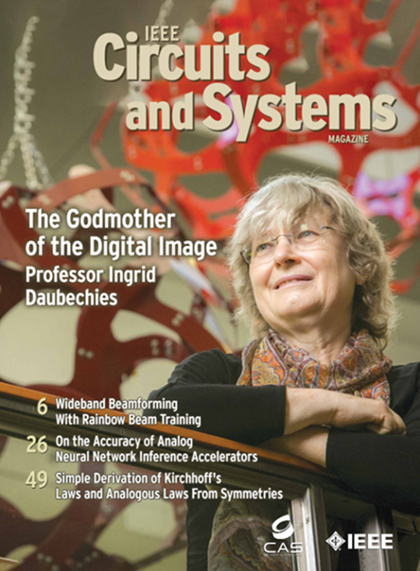微型机器学习:进步与未来[专题]
IF 5.6
2区 工程技术
Q1 ENGINEERING, ELECTRICAL & ELECTRONIC
引用次数: 0
摘要
微型机器学习(TinyML)是机器学习的新前沿。通过将深度学习模型压缩到数十亿个物联网设备和微控制器(mcu)中,我们扩展了应用范围并实现了无处不在的智能。然而,由于硬件的限制,TinyML是具有挑战性的:微小的内存资源很难容纳为云和移动平台设计的深度学习模型。对裸机设备的编译器和推理引擎支持也很有限。因此,我们需要共同设计算法和系统堆栈来启用TinyML。在这篇综述中,我们将首先讨论TinyML的定义、挑战和应用。然后,我们调查了TinyML和深度学习在mcu上的最新进展。接下来,我们将介绍MCUNet,展示如何通过系统算法协同设计在物联网设备上实现imagenet规模的AI应用。我们将进一步将解决方案从推理扩展到训练,并引入微小的设备上训练技术。最后,提出了该领域的发展方向。今天的“大”模型可能是明天的“小”模型。TinyML的范围应该随着时间的推移而发展和适应。本文章由计算机程序翻译,如有差异,请以英文原文为准。
Tiny Machine Learning: Progress and Futures [Feature]
Tiny machine learning (TinyML) is a new frontier of machine learning. By squeezing deep learning models into billions of IoT devices and microcontrollers (MCUs), we expand the scope of applications and enable ubiquitous intelligence. However, TinyML is challenging due to the hardware constraints: the tiny memory resource is difficult hold deep learning models designed for cloud and mobile platforms. There is also limited compiler and inference engine support for bare-metal devices. Therefore, we need to co-design the algorithm and system stack to enable TinyML. In this review, we will first discuss the definition, challenges, and applications of TinyML. We then survey the recent progress in TinyML and deep learning on MCUs. Next, we will introduce MCUNet, showing how we can achieve ImageNet-scale AI applications on IoT devices with system-algorithm co-design. We will further extend the solution from inference to training and introduce tiny on-device training techniques. Finally, we present future directions in this area. Today’s “large” model might be tomorrow’s “tiny” model. The scope of TinyML should evolve and adapt over time.
求助全文
通过发布文献求助,成功后即可免费获取论文全文。
去求助
来源期刊

IEEE Circuits and Systems Magazine
工程技术-工程:电子与电气
CiteScore
9.30
自引率
1.40%
发文量
34
审稿时长
>12 weeks
期刊介绍:
The IEEE Circuits and Systems Magazine covers the subject areas represented by the Society's transactions, including: analog, passive, switch capacitor, and digital filters; electronic circuits, networks, graph theory, and RF communication circuits; system theory; discrete, IC, and VLSI circuit design; multidimensional circuits and systems; large-scale systems and power networks; nonlinear circuits and systems, wavelets, filter banks, and applications; neural networks; and signal processing. Content also covers the areas represented by the Society technical committees: analog signal processing, cellular neural networks and array computing, circuits and systems for communications, computer-aided network design, digital signal processing, multimedia systems and applications, neural systems and applications, nonlinear circuits and systems, power systems and power electronics and circuits, sensors and micromaching, visual signal processing and communication, and VLSI systems and applications. Lastly, the magazine covers the interests represented by the widespread conference activity of the IEEE Circuits and Systems Society. In addition to the technical articles, the magazine also covers Society administrative activities, as for instance the meetings of the Board of Governors, Society People, as for instance the stories of award winners-fellows, medalists, and so forth, and Places reached by the Society, including readable reports from the Society's conferences around the world.
 求助内容:
求助内容: 应助结果提醒方式:
应助结果提醒方式:


